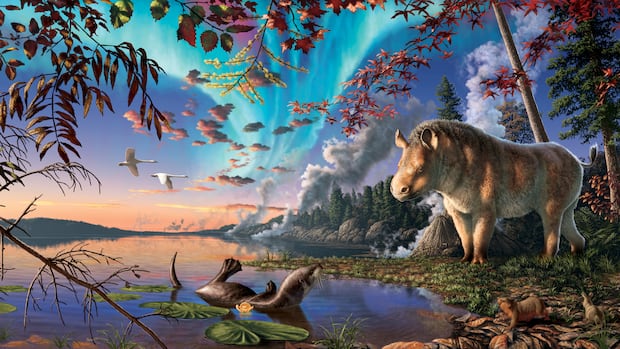A hornless rhinoceros the size of a pony roamed the forests of northern Nunavut millions of years ago, marking the discovery of the northernmost rhino species. A recent study revealed this new species, named Epiatheracerium itjilik, sheds light on its presence in the Arctic.
The rhino, similar in size to the modern Indian rhinoceros, stood about a meter tall at the shoulder. Researchers unearthed over 70% of its skeleton in the Haughton Crater on Devon Island, surpassing the previous record set by a Yukon specimen. From the skull and teeth, researchers deduced the rhino’s age to be in early to middle adulthood.
The study’s lead author, Danielle Fraser, highlighted that the rhino likely was female, based on dental size differences between male and female rhinos. The reconstruction of the rhino depicts a hornless, furry creature near a lake surrounded by diverse flora and fauna.
Named after the Inuktitut word for “frosty,” the rhino’s species designation reflects its polar habitat. Unlike most rhinos, it walked on four toes and did not possess a horn. This unique species, belonging to the European genus Epiatheracerium, raises questions about its migration to Devon Island.
The study proposes that the rhino’s presence provides evidence of animal crossings during the Early Miocene, challenging previous assumptions of a broken land bridge between Europe and North America. The discovery culminates a 40-year journey from the initial discovery of the rhino’s bones by Mary Dawson in the 1980s.
The Haughton Crater, where the rhino’s fossils were found, was once a lake after an asteroid impact on Devon Island. Fossil fragments of various animals, including the rhino, have been unearthed from the site, adding to the understanding of the prehistoric Arctic ecosystem.
Experts, intrigued by the study’s findings, acknowledge the significance of the rhino discovery in the Arctic and its implications for understanding ancient animal migrations. The comprehensive analysis of the rhino’s skeleton provides valuable insights into its unique characteristics and evolutionary history.



